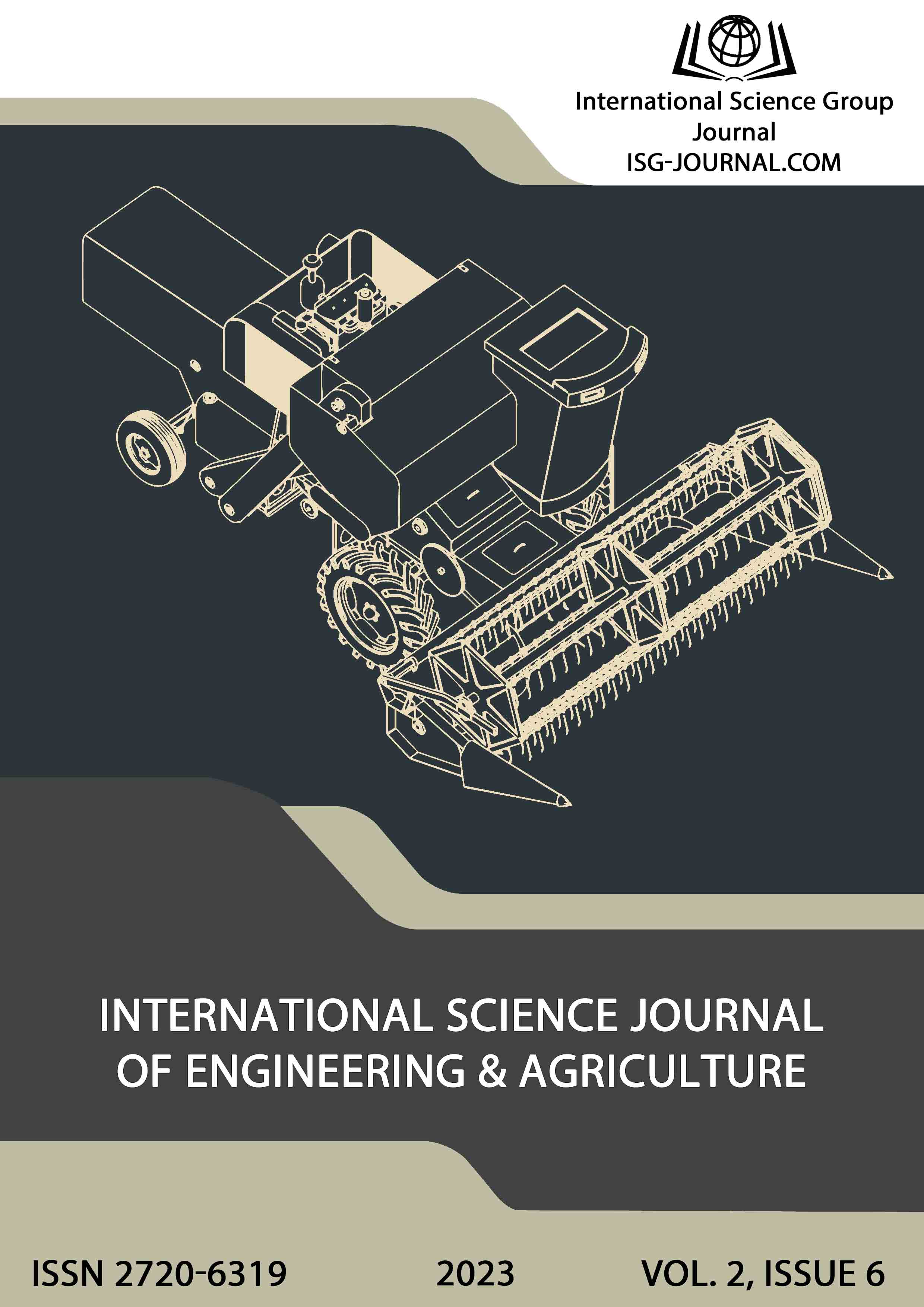Determination of the type of biological tissue using machine learning
DOI:
https://doi.org/10.46299/j.isjea.20230206.01Keywords:
machine learning, artificial intelligence, information technology, intelligent data analysis, evaluation board EVAL-AD5933EBZ, impedance of biological tissues, amplitude-frequency characteristicAbstract
The development of information technologies for the recognition and classification of measurement data of the frequency characteristics of the impedance of biological tissues based on machine learning technologies is an urgent task for the implementation of theoretical and applied research on the issue of determining the type of biological tissues. The aim of the work is to develop and train a model for classifying the type of biological tissue. Using the evaluation board Eval AD5933EBZ, the amplitude-frequency characteristics of the impedance of biological tissues (apples, kiwi and onions) were measured, after which, with the help of machine learning, their optimal classification was carried out. For modeling, the GMDH Shell system is used, which allows solving the following modeling tasks: classification (category prediction); multidimensional forecasting of time series; regression (continuous predicted value); polynomial approximation of curves. The following classification methods are used in the article: combinatorial, step-by-step with addition, step-by-step mixed. As can be seen from the classification results and graphs of amplitude-frequency characteristics of living biological tissues, the classification result directly depends on the quality of the measurement data, an example of this is an apple. There is no noise on the graph of the amplitude-frequency characteristic of the apple, which made it possible to correctly classify the tissue by 100%.References
Нікітін, В., Дубко, А. (2023). Частотні залежності імпедансу еквівалентних електричних схем заміщення живих біологічних тканин, які моделюють норму та патологічний стан. International Science Journal of Engineering & Agriculture, 2(2), 10-20. doi: https://doi.org/10.46299/j.isjea.20230202.02.
Кононова, К. (2020). Машинне навчання: методи та моделі. Харків: ХНУ імені В. Н. Каразіна, 301.
Савченко, Є. (2019). Задача багатозадачного навчання як одна з важливих задач машинного навчання. Індуктивне моделювання складних систем, 11. 103-111.
Що таке machine learning? Як працює машинне навчання та де воно використовується. Available at: https://www.telegraf.in.ua/advertisement/10119869-scho-take-machine-learning-jak-pracjuye-mashinne-navchannja-ta-de-vono-vikoristovuyetsja.html.
Rao, C., Govindaraju, V. (2013). Machine Learning: Theory and Applications. Handbook of Statistics, 31. 552.
Могильний, С. (2019). Машинне навчання з використанням мікрокомп’ютерів: навч.-метод. посіб. За ред. О. В. Лісового та ін. К., 224.
Turing, A. (1995). Lecture to the London Mathematical Society on 20 February 1947. 1986. MD. Comput. 12, 390–397.
Погореленко, А. (2018). Штучний інтелект: сутність, аналіз застосування, перспективи розвитку. Науковий вісник Херсонського державного університету, 32. 22-27.
Штучний інтелект навчився діагностувати очні хвороби. Available at: http.
Lytvyn, V., Vysotska, V. (2015). Designing Architecture of Electronic Content Commerce System. Computer Science and Information Technologies: Proc. of the Xth Int. Conf. CSIT’2015, 14–17 September, 2015, Lviv, Ukraine. Publishing Lviv Polytechnic. 115 – 119.
Junjie, P., Elizabeth, C., Pierre, D. and Coziana, C. (2018). Machine Learning Techniques for Personalised Medicine Approaches in Immune-Mediated Chronic Inflammatory Diseases: Applications and Challenges. Frontiers in Pharmacology. Machine Learning in Autoimmune Diseases 2021, 12. Article 720694. 1-18. doi: 10.3389/fphar.2021.720694.
Кравченко, С., Гришкун, Є., Власенко, О. (2020). Методи класифікації машинного навчання з використанням бібліотеки SCIKIT-LEARN. Вчені записки ТНУ імені В.І. Вернадського. Серія: технічні науки, 31(70). 121-125. doi: https.
Нікітін, В., Дубко, А. (2022). Вимірювання імпедансу біологічних тканин та інших середовищ за допомогою оціночної плати EVAL AD5933EBZ. International Science Journal of Engineering & Agriculture, 1(4), 80–91. doi:https://doi.org/10.46299/j.isjea.20220104.04.
EVAL-AD5933. Available at: https://www.analog.com/en/design-center/evaluation-hardware-and-software/evaluation-boards-kits/eval-ad5933.html#eb-documentation.
Базаев, Н., Пржиялговская А., Руденко П. (2016). Особенности использования микросхемы AD5933 в качестве измерителя импеданса при проектировании малогабаритных систем. Известия вузов. Электроника. Том 21 № 3, 279-285.
GMDH Shell for Data Science uses the power of the GMDH (Group Method of Data Handling). Available at: http.
Рябцев, В., Шевченко, Н. (2014) Прогнозирование социальних показателей при помощи системы GMDH SHELL. Вісник КНУТД 2014, №2. 162-168.
Mogilev, P., Alexandrov, M., Boldyreva, A,. Cardiff, J. (2020). GMDH-based Models for Mid-term Forecast of Cryptocurrencies (on example of Waves). 2020 IEEE 15th International Conference on Computer Sciences and Information Technologies (CSIT). 23-26 September, 2020, Zbarazh-Lviv, Ukraine, 2. 13-16.
Learning algorithms. Available at: https://gmdhsoftware.com/docs/learning_algorithms.
Downloads
Published
How to Cite
Issue
Section
License
Copyright (c) 2023 Viktor Nikitin, Anrii Dubko

This work is licensed under a Creative Commons Attribution 4.0 International License.






